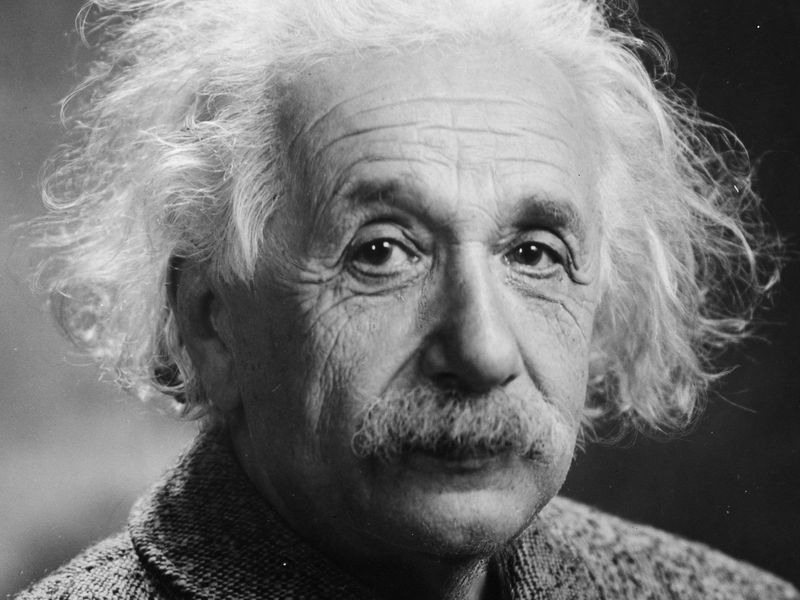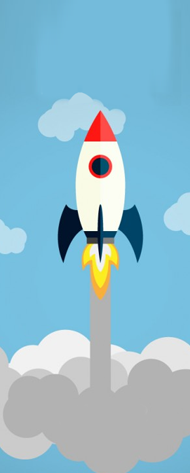German mathematician and physicist Albert Einstein
By Pooja | General knowledge | May 29, 2020

Albert Einstein
Albert Einstein was a physicist who is known for developing the relativity theory. He was born on March 14, 1879 in the Germany and is considered one of the most influential physicists of this era.
Albert Einstein Facts:
Albert Einstein (March 14, 1879 to April 18, 1955) was a German mathematician and physicist who built up the uncommon and general hypotheses of relativity. It was in the year 1921, he won the Nobel Prize for his work on material science for his clarification of the photoelectric impact. In the next decade, he moved to the U.S. in the wake of being focused by the Nazis. His work additionally majorly affected the advancement of nuclear vitality. In his later years, Einstein concentrated on bound together field hypothesis. With his energy for request, Einstein is commonly viewed as the most powerful physicist of the twentieth century.
Albert Einstein: Inventions and Discoveries
As a physicist, Einstein had numerous revelations, yet he is maybe best known for his hypothesis of relativity and the condition E=MC2, which foreshadowed the improvement of nuclear power and the nuclear bomb.
Hypothesis of Relativity
Einstein previously proposed an uncommon hypothesis of relativity in 1905 in his paper, "On the Electrodynamics of Moving Bodies," taking material science an energizing new way. By November 1915, Einstein finished the general hypothesis of relativity. Einstein considered this hypothesis an amazing climax explore. He was persuaded of the benefits of general relativity since it considered an increasingly precise forecast of planetary circles around the sun, which missed the mark in Isaac Newton's hypothesis, and for a progressively far reaching, nuanced clarification of how gravitational powers functioned. Einstein's attestations were insisted by means of perceptions and estimations by British space experts Sir Frank Dyson and Sir Arthur Eddington amid the 1919 sun based obscuration, and in this manner a worldwide science symbol was conceived.
Einstein's E=MC2
Einstein's 1905 paper on the issue/vitality relationship proposed the condition E=MC2: vitality of a body (E) is equivalent to the mass (M) of that body times the speed of light squared (C2). This condition recommended that small particles of issue could be changed over into immense measures of vitality, a revelation that proclaimed nuclear power. Renowned quantum scholar.
Family:
Albert Einstein experienced childhood in a mainstream Jewish family. His dad, Hermann Einstein, was a sales rep and architect who, with his sibling, established Elektrotechnische Fabrik J. Einstein and Cie, a Munich-based organization that produced electrical hardware. Albert's mom, the previous Pauline Koch, ran the family. Einstein had one sister, Maja, brought into the world two years after him.
Albert Einstein: Wives and Children:
Albert Einstein wedded Milena Maric on Jan. 6, 1903. While going to class in Zurich, Einstein met Maric, a Serbian material science understudy. Einstein kept on developing nearer to Maric, yet his folks were unequivocally against the relationship because of her ethnic foundation. Regardless, Einstein kept on observing her, with the two building up a correspondence by means of letters in which he communicated a significant number of his logical thoughts. Einstein's dad passed away in 1902, and the couple wedded from that point.
Hans Albert Einstein:
That equivalent year the couple had a girl, Lieserl, who may have been later raised by Maric's relatives or surrendered for appropriation. Her definitive destiny and whereabouts remain a puzzle. The couple had two children, Hans Albert Einstein (who turned into a notable water driven specialist) and Eduard "Tete" Einstein (who was determined to have schizophrenia as a young fellow).
The marriage would not be a cheerful one, with the two separating in 1919 and Maric having a passionate breakdown in association with the split. Einstein, as a feature of a settlement, consented to give Maric any subsidizes he may get from perhaps winning the Nobel Prize later on.
Amid his marriage to Maric, Einstein had additionally started an undertaking some time prior with a cousin, Elsa Löwenthal. The couple marry in 1919, that time of Einstein's separation. He would keep on observing other ladies during his time marriage, which finished with Löwenthal's passing in 1936.
At the point when and Where Was Albert Einstein Born?
Albert Einstein was conceived on March 14, 1879 in Ulm, Württemberg, Germany.
At the point when Did Albert Einstein Die?
Albert Einstein kicked the bucket on April 18, 1955, at age 76 at the University Medical Center at Princeton. The earlier day, while chipping away at a discourse to respect Israel's seventh commemoration, Einstein endured a stomach aortic aneurysm. He was taken to the doctor's facility for treatment yet declined medical procedure, trusting that he had carried on with his life and was substance to acknowledge his destiny.
Einstein's Brain:
Amid Albert Einstein's post-mortem examination, Thomas Stoltz Harvey expelled his cerebrum, allegedly without the authorization of his family, for conservation and future investigation by specialists of neuroscience. Notwithstanding, amid his life Einstein partook in mind examines, and something like one life story says he trusted specialists would consider his cerebrum after he kicked the bucket. Einstein's mind is presently situated at the Princeton University Medical Center, and his remaining parts were incinerated and his fiery remains dissipated in an undisclosed area, following his desires.
In 1999, Canadian researchers who were contemplating Einstein's mind discovered that his second rate parietal projection, the territory that forms spatial connections, 3D-representation and numerical idea, was 15 percent more extensive than in individuals with ordinary insight. As per The New York Times, the analysts trust it might help clarify why Einstein was so smart.
Youthful Albert Einstein:
In his early childhood Einstein studied at Luitpold Gymnasium but he was never flexible with the school’s academic style. He additionally had what were viewed as discourse difficulties, however he built up an energy for traditional music and playing the violin that would remain with him into his later years. Most essentially, Einstein's childhood was set apart by profound curiosity and request.
Towards the finish of the 1880s, Max Talmud, a Polish restorative understudy who now and again ate with the Einstein family, turned into a casual mentor to youthful Albert. Commentary had acquainted his understudy with a kids' science message that enlivened Einstein to dream about the idea of light. In this way, amid his youngsters, Einstein wrote what might be viewed as his first real paper, "The Investigation of the State of Aether in Magnetic Fields."
Hermann Einstein migrated the family to Milan, Italy, in the mid-1890s after his business missed out on a noteworthy contract. Albert was gone out in Munich to finish his tutoring at the Luitpold Gymnasium. Looked with military obligation when he turned of age, Albert purportedly pulled back from classes, utilizing a specialist's note to pardon himself and guarantee anxious fatigue. With their child rejoining them in Italy, his folks comprehended Einstein's point of view yet were worried about his future prospects as a school dropout and draft dodger.
Training:
Einstein was in the long run ready to pick up induction into the Swiss Federal Polytechnic School in Zurich, explicitly because of his brilliant science and material science scores on the selection test. He was as yet required to finish his pre-college instruction first, and in this manner went to a secondary school in Aarau, Switzerland helmed by Jost Winteler. Einstein lived with the schoolmaster's family and experienced passionate feelings for Winteler's girl, Marie. Einstein later disavowed his German citizenship and turned into a Swiss national at the beginning of the new century.
In the wake of graduating, Einstein confronted significant difficulties as far as discovering scholastic positions, having estranged a few teachers over not going to class all the more consistently in lieu of concentrate autonomously. Einstein in the end discovered enduring work in 1902 in the wake of accepting a referral for an assistant position in a Swiss patent office. While working at the patent office, Einstein had sufficient energy to additionally investigate thoughts that had grabbed hold amid his examinations at Polytechnic and therefore established his hypotheses on what might be known as the standard of relativity.
In 1905—seen by numerous individuals as a "marvel year" for the scholar—Einstein had four papers distributed in the Annalen der Physik, a standout amongst the best known material science diaries of the time. Two concentrated on photoelectric impact and Brownian movement. The two others, which laid out E=MC2 and the uncommon hypothesis of relativity, were characterizing for Einstein's vocation and the course of the investigation of material science.
Nobel Prize for Physics:
In 1921, Einstein won the Nobel Prize for Physics for his clarification of the photoelectric impact, since his thoughts on relativity were as yet viewed as sketchy. He wasn't really given the honor until the next year because of a bureaucratic decision, and amid his acknowledgment discourse regardless he selected to talk about relativity.
In the advancement of his general hypothesis, Einstein had clutched the conviction that the universe was a settled, static substance, otherwise known as a "cosmological steady," however his later speculations specifically repudiated this thought and affirmed that the universe could be in a condition of transition. Space expert Edwin Hubble found that we without a doubt occupy a growing universe, with the two researchers meeting at the Mount Wilson Observatory close Los Angeles in 1930.
Turning into a U.S. National:
In 1933, Einstein went up against a situation at the Institute for Advanced Study at Princeton, New Jersey. At the time the Nazis, driven by Adolf Hitler, were picking up unmistakable quality with savage purposeful publicity and bitterness in a devastated post-WWI Germany. The gathering affected different researchers to name Einstein's work "Jewish material science.
Share this Post
(इस पोस्ट को अपने दोस्तों के साथ शेयर करना ना भूले)Posts in Other Categories
Latest Posts
SSC CHSL Tier 1 Exam in Three Shifts – When Will ...
Nov 01, 2025
IBPS Clerk Syllabus 2025: Mains Exam Pattern, Su ...
Nov 01, 2025



.jpg)
.jpg)
-1.jpg)
.png)
.jpg)
